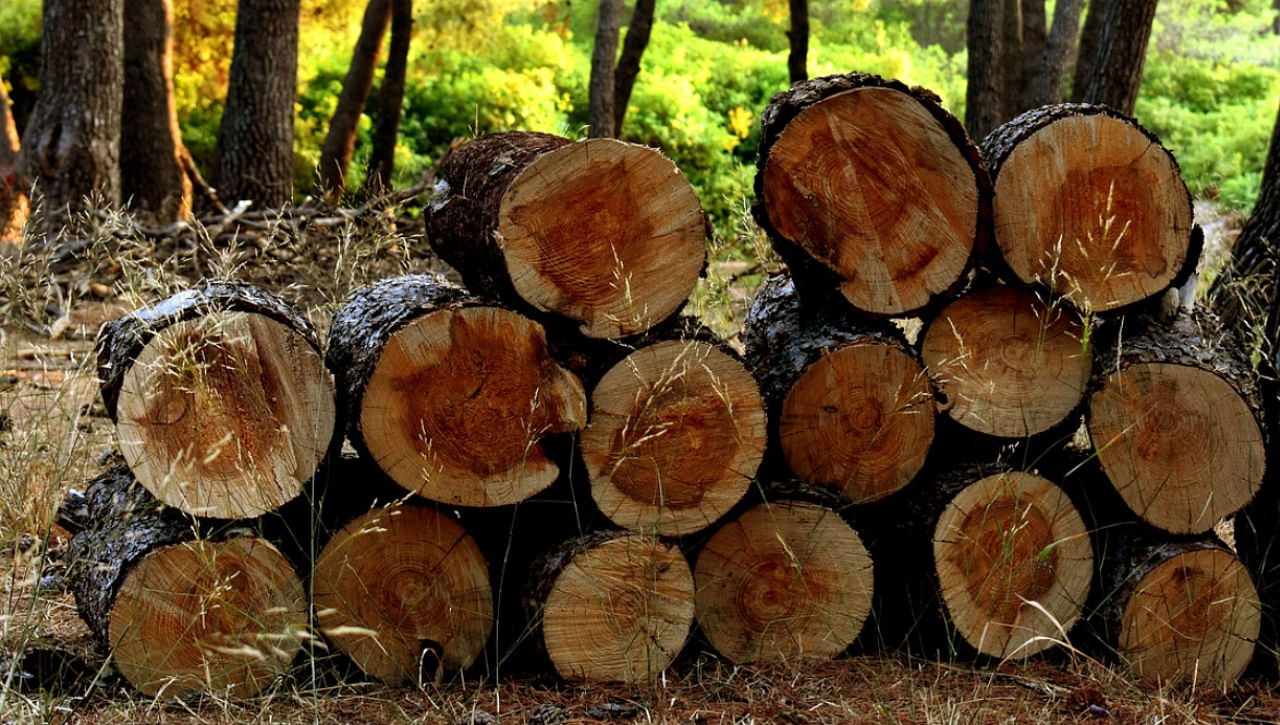
The Forest Department has been losing its edge in the sale of timber, one of its oldest businesses, ever since the online auction system was implemented.
As per a study by the Karnataka Evaluation Authority, the e-system has resulted in losses for the department.
The conventional method of physical auctioning was abandoned from 2017-18 to bring in transparency and to put an end to allegations of corruption. The e-timber system, however, has posed new challenges to the department, which is dealing with unsold timber that loses its value and leads to losses.
Each type of timber (teak, rosewood, acacia etc) is grouped into different ‘lots’ based on quality and size. The department fixes an upset value for lots based on the average amount of past three successful bids. Data showed that in the conventional method, when a Deputy Conservator of Forests sold the lots, up to 70% of timber on sale was auctioned. This has dropped to 38.5% in e-auction. This, the study said, was mainly due to the lack of discretionary power of officials to change the offset price.
A ‘lot’ that remains unsold in the first round of auction starts losing its value in subsequent rounds. The sooner a lot is sold, the better the revenue. At Thithimathi depot, for example, rosewood that was put up on auction at a base price of Rs 2.86 lakh in 2014 was finally sold at Rs 26,000 in 2018.
As many lots remained unsold, the price of timber fell almost every year though the inflation should have seen the prices increasing. The average rate of a cubic metre of rosewood fell from Rs 90,189 in 2015-16 (conventional sale) to Rs 77,835 in 2019-20 (e-auction); the price of a cubic metre of mathi came down from Rs 22,030 to Rs 21,614 during the same years. The other timber analysed included acacia, Nandi and teak.
As a result, the study said, the department lost about Rs 71 crore (Rs 16.52%) on a turnover of Rs 426.06 crore in the last three years. “The Forest Department has been extracting and selling teak, rosewood and Nandi timbers, below the seigniorage rate (intrinsic value). It should also be noted that the bid rates are the rates received for extracted, converted and transported timber. The department spends substantial money on these processes as well,” it added.
Sanjai Mohan, Principal Chief Conservator of Forests, however, said the report was erroneous and the department as well as the government has rejected the same. “The report has been prepared by someone who doesn’t know how the system works. The data is not correct. We have rejected the report,” he said.
However, sources said the report was prepared on request of the department which provided all the data. “It’s not a report against the e-auction. Rather, it is the much-needed introspection we need to prevent further losses,” the source said.
Mohan, however, said the e-auction system was set for a reform. “We are opening a dedicated window for local bidders and taking steps to ensure faster sale of timber that doesn’t get bids in the first round. Steps are also being taken to rationalise the offset price based on the market value,” he said.